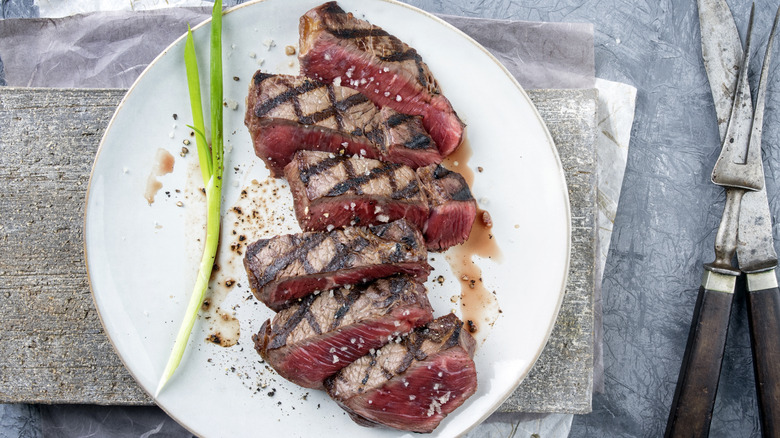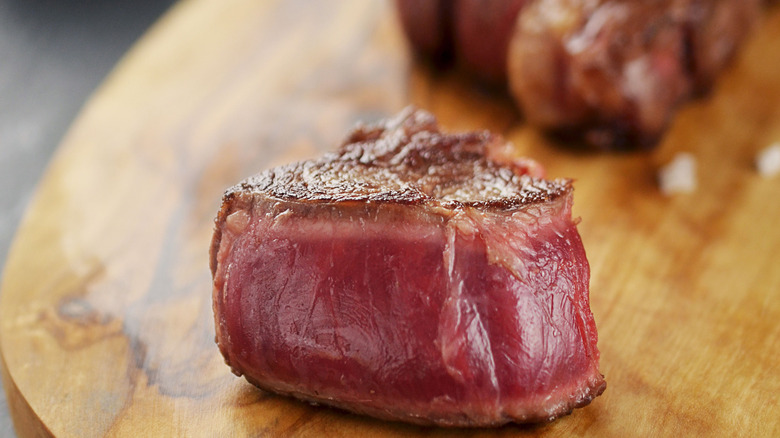What It Means To Cook A Blue Steak
There is no right or wrong way to cook a steak. Being completely a matter of preference, a perfectly cooked filet can mean different things to different people. That said, the preferred doneness can fall anywhere from rare (least cooked) to well done (most cooked). However, some would argue that the scale actually starts at blue.
Grilled for a mere minute or two, blue steak is exactly what it sounds like — a cut cooked so rare the steak's internal color mimics the indigo tint of raw beef prior to oxygen exposure. And although the steak becomes somewhat warm during the cooking process, the center remains essentially raw. Because of this quick exposure to high heat, a nice sear or even char is achieved, which gave rise to the term, the "black and blue" steak.
Allowing for the truest and most unadulterated flavors of the beef to be expressed, cooking a steak to blue is also an excellent way to maintain its naturally tender quality. But not all cuts of meat are up to the task, as tough or fatty steaks require more time to allow fat to fully render into the meat for a juicier and more pleasant bite. For melt-in-your-mouth results, leaner options like a tenderloin or flat iron are ideal for cooking to blue.
What you need to know about this extra rare steak
It can be hard to judge when exactly a blue steak is ready based on appearance alone, so a meat thermometer can get rid of some of the guesswork. Once temperatures read about 115 degrees Fahrenheit, most grill masters agree that the purple-tinged steak is ready to be removed from the grill and left to rest briefly before enjoying. However, if you're slightly skeptical about whether or not blue steak is actually safe to eat, we've got some information that may put things into perspective.
According to the USDA, beef should always have an internal temperature of at least 145° Fahrenheit in order to eliminate any harmful bacteria present in the meat. As a result, this means that any steaks cooked any less than medium will pose a health risk. But, because most bacteria are present on the exterior of a steak, searing the outside of the filet will likely eliminate these potential pathogens. This means that rare steaks (even blue steaks) are more than okay to consume so long as the meat is of the highest quality — buying from a trusted butcher is a must — and it is seared correctly.
With the lore around blue steak now demystified, will you give this level of doneness a try the next time you order one?

